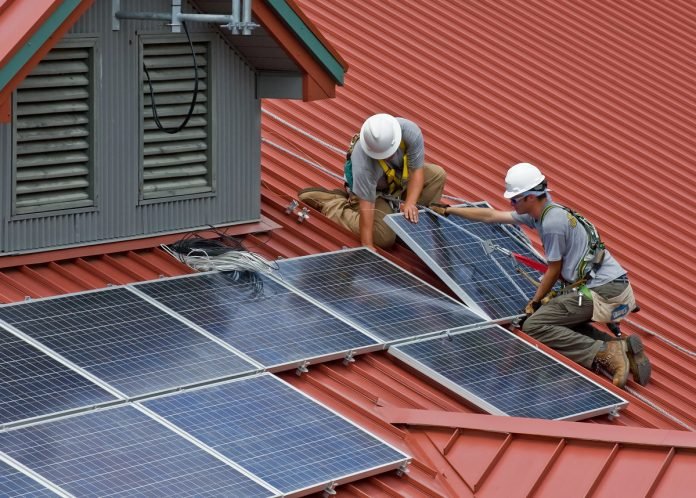Last Updated on October 13, 2024 by Asfa Rasheed
Solar panels can be an excellent way to offset your energy costs. They also help protect the environment.
A solar company will visit your property to assess your needs, evaluate the roof and shading issues and discuss incentives in your area.
Once the design process is complete, a team will order and obtain all permits and equipment needed for your installation. Depending on where you live, this could take two to eight weeks.
Table of Contents
Roof Preparation
Before the solar panels can be mounted to your roof, several steps need to be completed. These steps will ensure the installation goes smoothly and provides optimal energy production.
During this phase, your roof must be free of debris that could interfere with the solar panels’ placement or hinder their efficiency. It is also essential to clear any trees that may block sunlight from reaching your roof.
For instance, the next step in the solar panel installation process from Thornton CO Solar Provider – Solar By Peak to Peak is to attach mounting rails and flashings. These components will secure the racking system to your roof and distribute its weight evenly throughout your rafters.
These steps will vary depending on your roofing material, but they are a critical part of the process. Be sure to use the correct equipment and safety measures to complete the task with minimal risk of injury to yourself or others.
Electrical Wiring
Electrical wiring is one of the most important aspects of a solar system. It ensures the system functions properly and meets all your power requirements.
Wiring a solar system involves two main components: the inverter and the charge controller. These are essential components of the solar system that convert DC energy into AC electricity.
During this phase of the solar installation process, like at solar by Peak to Peak, you’ll need to plan your wire run and ground your system. Installing a back feed breaker to connect your approach to the utility grid in an emergency is also necessary.
Typically, solar wires are made of copper, which has better conductivity than aluminum. They’re available in various gauges and can support indoor and outdoor applications.
Racking
Racking is a critical part of any solar installation. It holds the panels in place and allows for the connection of wiring and inverters.
A racking system can be roof-mounted, ground-mounted, or pole-mounted, depending on your location. Roof-mounted racking systems are often made of aluminum because they’re light, strong, and low-profile.
Ground-mounted racking systems, on the other hand, are typically made of steel and connected to a ground screw, piling, or concrete caisson. They’re commonly used in commercial or utility-scale applications but are also available for residential projects.
Choosing the right racking system is essential for your safety on the job site and can save you time and money in the long run. Make sure you select a racking solution that is easy to work with and will allow you to install the panels quickly and safely.
Panels
The first phase of solar installation is designing the solar panel system to meet your home’s needs. This step involves a professional engineer who evaluates your electricity use, roof characteristics, and local building codes to design a system that’s right for you.
Once the design is approved, it’s time to order your panels from your solar company’s primary distributor. This can take a few weeks, but your solar company will cover everything.
Once the panels arrive, your solar contractor will install them on your roof. This can take a few days, depending on the size of your system.
Inverter
Inverters convert DC electricity from solar panels to alternating current (AC) most homes use. Since AC is more efficient at transmitting energy, most home appliances and electrical devices use it.
Inverter manufacturers typically specify the maximum input power that their products can handle. However, you’ll rarely reach that maximum output in the real world.
This is why most solar inverters clip off at the point of maximum production, ensuring you can still receive electricity from the grid. This also enables you to qualify for net metering, which is how the local utility will pay you back for your energy production.
Apart from this, if you are interested to know more about Yourself Solar Panel Installation then visit our Home Improvement category
















